VOL- 7 ; ISSUE- 4, PUNE RESEARCH - An International Journal in English (ISSN 2454-3454) JIF 3.02
7.4 ENGLISH
Area of Article : ALL
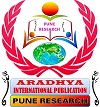
VOL- 7 ; ISSUE- 4, PUNE RESEARCH - An International Journal in English (ISSN 2454-3454) JIF 3.02
7.4 ENGLISH

VOL- 7 ; ISSUE- 4, PUNE RESEARCH - An International Journal in English (ISSN 2454-3454) JIF 3.02
7.4.1 ENGLISH
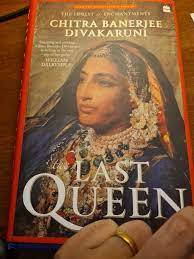
Rani
Jindan Kaur, was the last queen of Punjab, daughter of royal dog trainer, Manna
Singh Aulakh, youngest wife of Maharaja Ranjit Singh. Maharaja Ranjit Singh was
the founder of the Sikh kingdom of Punjab that extended from Khyber Pass to
Tibet and was also known as the Lion of Punjab for his fearless attitude. This
paper studies the journey of Jindan, from Gurjanwala to Lahore ending in
England through Nepal. If focuses on the events that transformed a simple
peasant girl to a bride at a the age of eighteen and then a queen that soon
ends in stage where she becomes a widow at twenty-one and then a queen regent
to her six year old son. It details the royal games that Jindan has to imbibe
in order to survive and pave the way for her son to inherit the throne. It also
describes the unconventional attitude of Jindan as a queen and her strong and
inspiring personality that even the British cannot ignore.
Keywords: Queen, royal, inspiring, survival,
personality.
VOL- 7 ; ISSUE- 4, PUNE RESEARCH - An International Journal in English (ISSN 2454-3454) JIF 3.02
7.4.2 ENGLISH
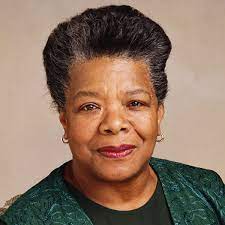
Marguerite
Annie Johnson well-known as Maya Angelou was an American poet, memoirist, and
civil rights activist. She published seven autobiographies, three books of
essays, several books of poetry and was credited with a list of plays, movies
and television shows spanning over 50 years. She received dozens of awards and
more than 50 honorary degrees. She is the best known for her series of seven
autobiographies which focus on her childhood and early adult experiences. The first,
“I know why the caged bird sings” which was published in 1969, it brought her
international recognition and acclaim is about her life up to her the age of
seventeen. She was respected as a spokes person for black people and women and
her works have been considered a defense of black culture. ‘Caged bird’ is a
poem which considers the conditions of the free bird and the caged bird.
Actually this contrast between the birds enables her to express her own emotions
about freedom and isolation. The reader can extend this feeling of being caged into
the human condition as well.
VOL- 7 ; ISSUE- 4, PUNE RESEARCH - An International Journal in English (ISSN 2454-3454) JIF 3.02
7.4.3 ENGLISH
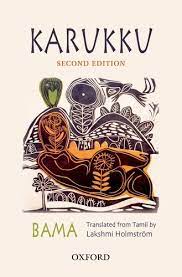
Indian
villages are the hotbeds of local ego, the violent caves of ignorance, the
burst mindset, and the hotbeds of casteism and racism. The caste system in
rural areas is a kind of obstacle to national economic development. Certain
castes have to endure economic slavery and some groups that have been stuck in
the caste system for generations as a result; cannot make their own economic
progress. Therefore, it is clear that
without breaking the chain of the caste system not only certain groups but also
the country won’t be able to progress on each level. However, in rural areas,
maximum agricultural land has been concentrated among the upper castes only. As
a result, the lower castes in the rural areas have been doing traditional
works, that’s why; agricultural work is the main economic resource of landless
laborers and hence they live captive life. The seasonable agricultural works
and the fewer wage and less income make an insecure and unstable life of rural
Dalits hence; they were being exploited under the pressure of the dominant
class. This unfair kind of behavior of the upper caste towards Dalits won’t be
solved the problems unless breaking the framework of the traditional rural
economy. (Dr. Ambedkar 355). Their financial instability and uncertain life
convert them loss of confidence, negative and unconscious to take any decision.
As a result; on any small issue they become upset and irritate to face the
problems. On this ground, Bama’s Karukku (1992) is a key text that exposes
these shameful and ugly secrets of the mainstream Indian society that
emphasizing the flawed, unjust opinions of those who work hard in the name of
caste hierarchy in the agriculture and at the upper caste house.
Keywords: Marginalization, Discrimination, Dehumanizing
Caste System, Resistance, Education, Empowerment.
VOL- 7 ; ISSUE- 4, PUNE RESEARCH - An International Journal in English (ISSN 2454-3454) JIF 3.02
7.4.4 ENGLISH
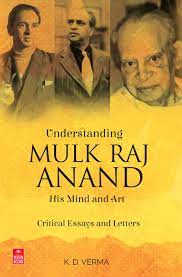
Mulk Raj Anand extraordinarily depicts the
life of Dalit in his novels. He is one of the three novelists from Indian
English literature who got fame because of their social explanation and make
aware to the world about downtrodden. He was born in Peshawar today it is in
Pakistan. Studied at Amritsar, Lahore and moved to London, and earned Ph.D. in
1929. He was awarded many awards like Padma Bhushan, Sahitya Academy Award in
India. Most of his novels give a brief description of the downtrodden. The
first novel of Mulk Raj Anand Untouchable was published in 1935, Coolie (1936),
Two Leaves and a Bud (1937), The Village (1939), and so on. In his all novels
he shows his deep concern about caste, class, and religion in India. The
picture of people their condition, sorrows, sufferings gives a sense of
humanity to the reader. The beginning period of the writing of Anand was the
period of transformation the Indians were struggling for freedom, it was not
only for politics but also for economic, literacy, casteism, superstition,
untouchability, and poverty.